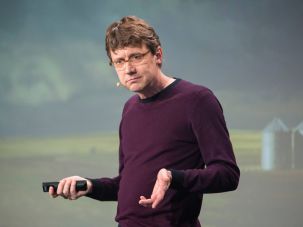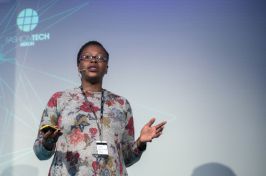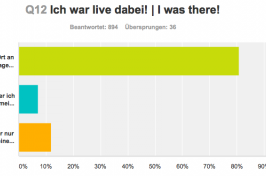Generative design, digital fabrication and, finally, AI – On Stage 1, Jeff Kowalski, Chief Technology Officer of Autodesk, took the participants at the re:publica TEN on a trip into the (near) future.
For over three and a half million years, tools have formed our world. But they have also formed us. The hand axe shaped the form of our hand, spears changed our coordination. Modern tools make new forms possible, such as u-shaped skyscrapers and curved cars. Today, humans hold smartphones in their hands instead of hand axes. "The gateway to the most powerful tool in history: the digital world" says Jeff Kowalski. But people will have to let go of their tools to make generative design possible. This design method allows for software to create its own designs through algorithms – on the basis of the specifications outlined by humans. This means, for instance, that the program can design the perfect drone, the design of which would be too complicated for the human imagination.
This is made possible through the "Internet of Things" (IoT). Hardware and software, such as sensors, are connected like in a nervous system and can thereby interact with each other. This means that the inspiration in design doesn't just come from one side of the screen – computers unite the real world and the laws of physics with that of the abstract, made up of formulas. Designers and software thereby become partners. And computers aren't just rational and logical like Mr. Spock. They become Captain Kirk, analysing and then intuitively finding the best solution.
Photo credit: re:publica/Jan Zappner (CC BY 2.0)






